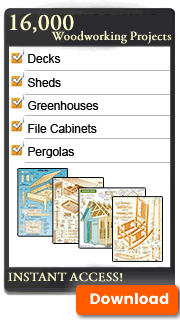DIY Outdoor Gazebo Guide
There are many different types of outdoor gazebo. Some are permanent structures built out of wood, metal, or stone, and others are built out of lightweight materials, and intended to be used as a portable shelter. The latter is basically an open-sided tent, making it convenient, highly portable, and easy to install for almost anyone.
Choosing a Gazebo Type
The type of gazebo you need depends on what you plan to use it for. A portable gazebo is great for festivals or special events at home, but they have the advantage of being transportable, and can be set up almost anywhere, including at the beach, camping, or take along on vacations. A permanent gazebo looks more like a classic gazebo, and is fixed in place with a poured slab or posts and columns that are buried in the ground. If you only need the gazebo occasionally, or want to be able to use it in many different places, consider using a portable gazebo, and storing it away between uses.
Types of Gazebos
Permanent gazebos are typically made of wood, and resemble either the classic Victorian gazebo, or an oriental pagoda with a flared top and heavy beams. Permanent gazebos are available in complete kits, or as a set of plans which list the parts required. Portable gazebos are often referred to as portable shelters, gazebo tents, or simply open tents. They are constructed with specially designed frames that interlock for added support, and are often covered with canvas or vinyl canopies. Another variation is to cover the outdoor gazebo with a netting, which keeps dirt, debris and insects out without sacrificing the benefits of direct sunlight.
The Layout
When you lay out an outdoor gazebo, increase the required diameter by at least 10 feet, or a 5 foot cleared area going all the way around the gazebo. This safety zone helps to prevent trips and falls, and provides the gazebo user with a place to add outdoor seating or tables. For the gazebo itself, the frame is intended to be placed on reasonably level ground. Rocky, uneven terrain will reduce the stability of the gazebo, possibly even requiring tie lines or the use of stand-alone frame mounts.
Portable Gazebo Assembly
To make building gazebos a little easier, many people use 5 gallon plastic buckets filled with sand as the corner foundations. This allows independently adjusting the posts higher or lower by adding or removing sand from the container. As a rule, if any frame post, when placed on the actual ground surface, is more than 6 inches higher or lower than any other post, artificial leveling is probably called for. Most gazebo plans will offer this or other solutions, and details for implementing them.
Using a Gazebo Kit
Using a gazebo kit is the best way to learn how to build a gazebo. A kit provides a complete set of plans, and any proprietary hardware that may be required. Most kits include the building materials, but will only provide the canopy, and the builder is responsible for purchasing other materials. A kit is many times more complicated than a pop-up gazebo, but kits are also designed for permanent placement, and meant to serve you well for many years





